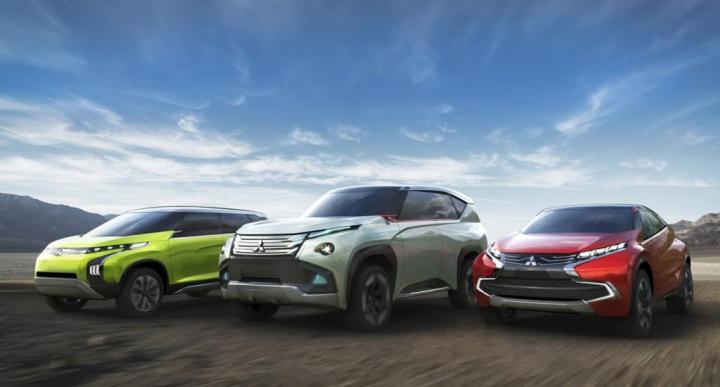
Last month, Mitsubishi teased three green concept cars ahead of their debut at the 2013 Tokyo Motor Show. Now, it’s giving the Internet a closer look.
Leading the pack is the GC-PHEV, a full-size plug-in hybrid SUV concept. A production version could take the spot vacated by the Montero (or Pajero, depending on where you live) at the top of Mitsubishi’s utility vehicle lineup.
The Japanese carmaker has revealed that the GC-PHEV’s power train consists of a 3.0-liter supercharged V6 mated to an eight-speed automatic transmission, working in concert with an electric motor and battery pack.
Mitsubishi says the GC-PHEV has “full-time” four-wheel drive, which means it may be able to operate as a 4×4 in gasoline, electric, or hybrid modes, rather than using the electric motor to power one axle, and the V6 to power the other.
The GC-PHEV also gets Mitsubishi’s Super All-Wheel Control (S-AWC) vehicle dynamics system to improve handling.
Mitsubishi will also show the smaller XR-PHEV plug-in at Tokyo. This compact crossover has a 1.1-liter turbocharged, direct-injected gasoline engine, along with an electric motor and battery pack.
Mitsubishi initially described the XR-PHEV’s styling as “sport coupe”-like. Indeed, it is very curvy for a utility vehicle, but it will be interesting to see how much of that styling flare will survive if Mitsubishi decides to put the XR into production.
Rounding out the roster is the Concept AR, which Mitsubishi says combines SUV maneuverability with minivan roominess. It sounds like a reincarnation of the first-generation Mazda MPV.
The AR is much better looking than that Mazda, though. Mitsubishi does a good job of disguising the fact that it’s a tall, minivan-ish wagon like the Ford C-Max and Toyota Prius V.
Under that deceptive sheet metal is the the same 1.1-liter engine found in the XR-PHEV.
Mitsubishi says all three cars also feature advanced V2V-based driver warning systems, which scan for threats and alert the driver, or activate various automated safety features.
The system also has a “failure/malfunction early detection” function that seems like a very sophisticated version of the idiot light.
All three concepts will be fully revealed at the 2013 Tokyo Motor Show, which opens November 20. Check back here for all the latest updates.


